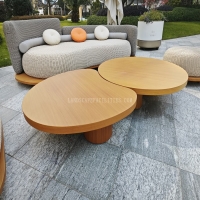Welcome to the website for landscape facilities products and knowledge.
What are the energy and resource consumption metrics for producing landscape round trash cans?
Producing landscape round trash cans involves various energy and resource consumption metrics that impact both cost and environmental sustainability. These bins are typically made from materials like high-density polyethylene (HDPE), stainless steel, or recycled plastics, each with distinct energy requirements during manufacturing.
Material Extraction and Processing:
- HDPE: Requires approximately 80-100 MJ/kg of energy, with significant water usage during production.
- Stainless Steel: Energy-intensive, consuming around 50-60 kWh per kilogram, but offers durability and recyclability.
- Recycled Plastics: Lower energy demand (30-40 MJ/kg) compared to virgin materials, reducing carbon footprint.
Manufacturing Process:
Injection molding for plastic bins consumes 2-5 kWh per unit, while metal fabrication for steel bins may use 10-15 kWh. Transportation and assembly add further energy costs, depending on logistics.
Sustainability Considerations:
Opting for recycled materials or designing for easy disassembly can reduce resource consumption. Lifecycle assessments (LCAs) help evaluate total energy use, from raw material sourcing to end-of-life recycling.
By understanding these metrics, municipalities and manufacturers can make informed choices to balance functionality, cost, and environmental impact.
Related search:

Recommendation
Elliptical metal outdoor table with nested design, resembling wood grain, round table